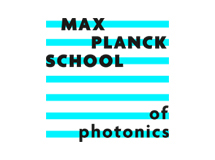Research
Cooperative quantum phenomena
Generally speaking, we are exploring dynamics in the full Hilbert space of many interacting quantum emitters for various applications in the areas of precision spectroscopy, robust quantum state preparation or nonlinear optics. The interactions we consider are brought on by the common coupling to the electromagnetic vacuum, optical fiber or optical cavity environments.
Transport of Charge and Excitons in Molecular Semiconductors
Transport of charge and excitons inside structures which can strongly confine the electromagnetic field (Fabry-Perot or co-planar cavities, plasmonic surfaces) can be strongly modified by resonant light-matter interactions. We provide theoretical models showing the competition between disorder-induced localization effects and light-induced long-range transport. These effect hint towards a novel type of materials with enhanced functionality which we dub vacuum- dressed materials.
Selected publications:
D. Hagenmüller et al., Cavity enhanced transport of charge, Phys. Rev. Lett. 119, 223601 (2017)
E. Orgiu et al., Conductivity in Organic Semiconductors Hybridized with the Vacuum Field, Nature Materials 14, 1123 (2015)
J. Schachenmayer et al., Cavity-enhanced transport of excitons, Phys. Rev. Lett. 114, 196403 (2015)
Quantum optics with molecular systems
Concepts of standard cavity quantum electrodynamics with two-level systems (strong coupling, Purcell enhancement of radiative decay, polaritons etc) can be translated to molecular ensembles by properly taking into account the vibrational modes of the nuclei. We provide theoretical models leading to analytical results for cavity and molecule spectroscopy, polariton cross-talk, Förster energy resonance transfer aided by cavities or by subradiant free space effects.
Selected publications:
M. Reitz et al., Molecule-photon interactions in phononic environments, Phys. Rev. Research 2, 033270 (2020)
M. Reitz et al., Langevin approach to quantum optics with molecules, Phys. Rev. Lett. 122, 203602 (2019)
Subradiant ensembles of quantum emitters
Ensembles of quantum emitters at high densities exhibit vacuum-mediated interactions both coherent (dipole-dipole interactions) and incoherent (super-and subradiance). While these effects are sometimes regarded as detrimental to different applications envisioned, we devise schemes where the robustness of these collective quantum states brought on by subradiance (which minimizes the radiative coupling to the environment) can be exploited. For example, one can show that subradiant collective states can be used to improve frequency sensitivity in metrology or the nonlinear response of a material inside optical cavities. Also, subradiant states can lead to a novel regime of collective cavity QED where the atomic cooperativity exhibits super-linear scalings with the number of atoms.
Selected publications:
D. Plankensteiner et al., Enhanced collective Purcell effect of coupled quantum emitter systems, Phys. Rev. A 99, 043843 (2019)
D. Plankensteiner et al., Cavity antiresonance spectroscopy of dipole-coupled subradiant arrays, Phys. Rev. Lett. 119, 093601 (2017)
L. Ostermann et al., Protected state enhanced quantum metrology with interacting two-level ensembles, Phys. Rev. Lett. 111, 123601 (2013)
Cooling of gases and macroscopic objects
We provide theoretical descriptions for the cooling of the thermal motion of gases and solid state macroscopic objects. In a first physical realization we consider a hollow-core fibre filled with exciplex gas where redistribution of energy from a coherent laser source to the environment can lead to a release of kinetic energy from the gas and subsequently from the glass fibre. A second physical realization is a standard optomechanical cavity where read-out of the mechanical motion of an end-mirror can indicate a proper cooling action realized either as a cold-damping loop or as a machine learning indicated optimal feedback action (using a reinforcement learning algorithm).
Selected publications:
C. Sommer et al., Partial optomechanical refrigeration via multi-mode cold damping feedback, Phys. Rev. Lett. 123, 203605 (2019)
C. Sommer et al., Laser refrigeration of gas filled hollow-core fibres, AIP Advances 9, 105213 (2019)
C. Sommer et al., Prospects of reinforcement learning for the simultaneous damping of many mechanical modes, Scientific Reports 10, 2623 (2020)
Hybrid Cavities
Standard quantum optics experiments often use the interaction of quantum emitters with a confined light mode described by a Jaynes-Cummings interactions in the context of cavity quantum electrodynamics. A typical assumption is that the optical elements are not reactive; as an example one typically assumes that the cavity mirrors have a constant reflectivity within a large bandwidth. We describe theoretically quantum optics with photonic crystal mirrors (Fano mirrors) or with engineered strongly coupled dispersive elements where the behavior of the cavity becomes highly non-Markovian. We provide a route to properly write Langevin equations as well as input-output formalism for such systems and illustrate applications in atom cavity QED and optomechanics.
Publications:
O. Cernotik et al, Cavity quantum electrodynamics with frequency-dependent reflectors, Phys. Rev. Lett. 122, 243601 (2019)
S. Schutz et al., Ensemble-induced strong light-matter coupling of a single quantum emitter, Phys. Rev. Lett. 124, 113602 (2020)
O. Cernotik et al, Interference effects in hybrid cavity optomechanics, Quantum Science and Technology 4, 024002 (2019)











